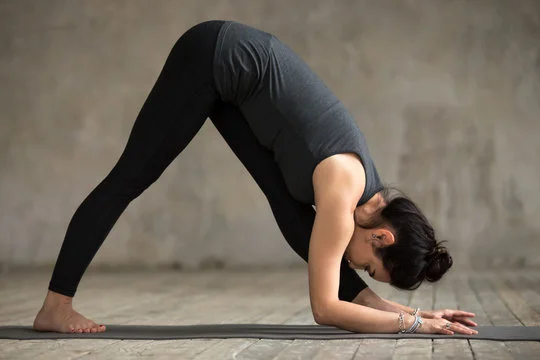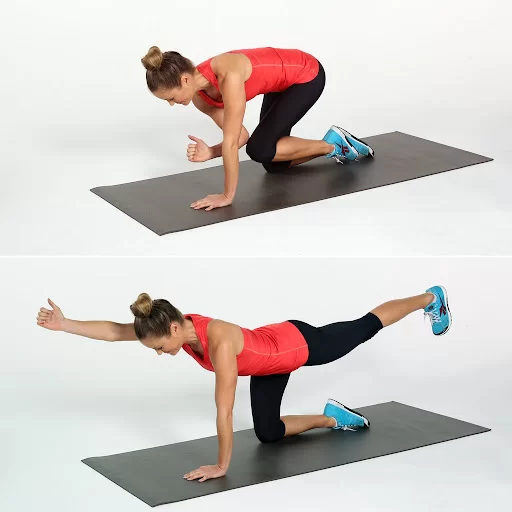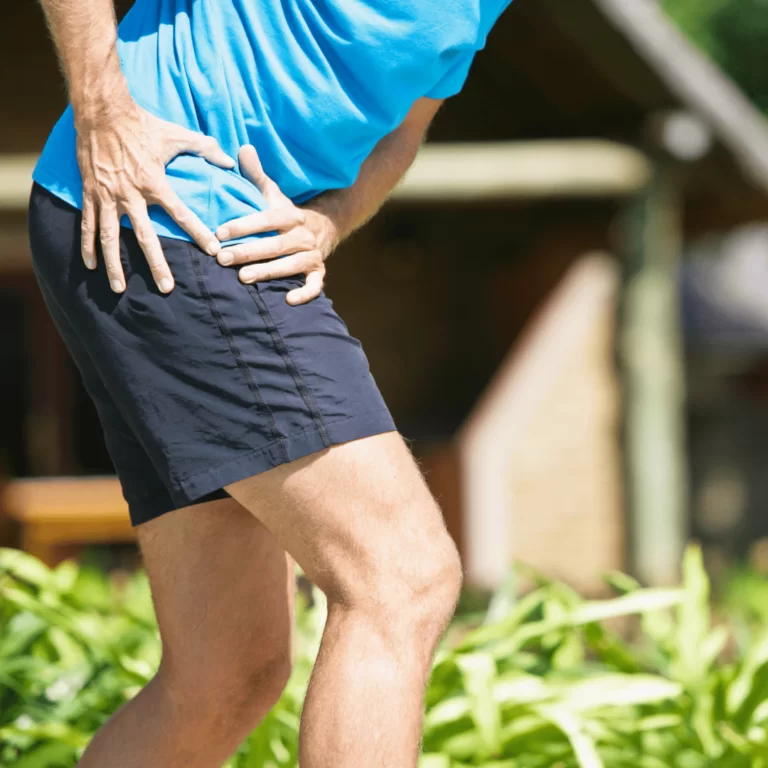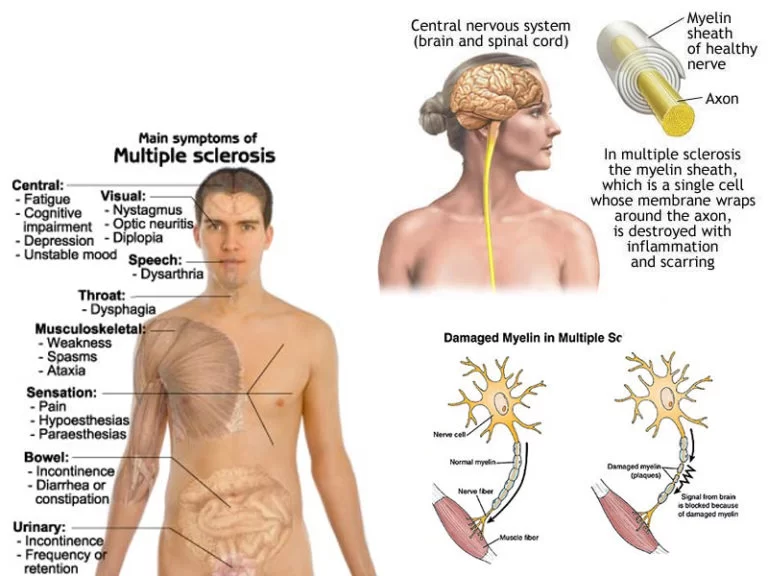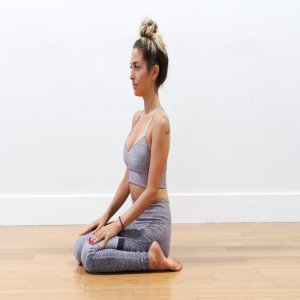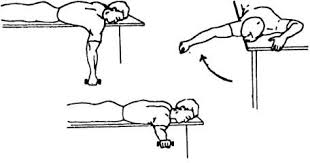Parshvottanasana (Pyramid pose)
What is Parshvottanasana?
Parshvottanasana, also known as Pyramid pose, is a standing yoga posture that stretches and strengthens the entire body, with a particular focus on the hamstrings, hips, and shoulders.
Pyramid Pose is a depth forward fold that is used to prolong hip muscles and hamstrings and prolongs the spine.
Its intimate parameters a narrow stance, as if on train paths—ask you to mindfully cultivate stability, strength, and integrity in the posture.
As you penetrate this asana, make sure that you do not hyperextend your knees or round your back and shoulders.
“You require to discover a balance between freedom and stability in Parsvottanasana,” states Natasha Rizopoulos, a yoga instructor and trainer with the Down Under School of Yoga.
The balance of your ground floor promotes the freedom you can feel in your upper body as you lengthen your backbone and extend your shoulders. As you explore the asana, embrace its dualities. Your physical alignment will enhance, and with the liberating influences of embodying opposites, you may experience an energetic alignment as well.”
Parshvottanasana or Pyramid pose (Step-by-step)?
To begin with, arrive at a vertical position close to the top of the mat with the feet hip distance apart.
- Prolong your left leg back so the feet are about 3.5′ to 4 apart. Maintain the right foot facing the facade with the side of the foot similar to the side edge of the mat.
- Maintain the left foot flexed about 60 degrees toward the front foot. Try to maintain both legs straight.
- Set the hands on the waist and bend the hips and shoulders so they are parallel to the top edge of the mat. Maintain the back heel firmly pressed into the mat.
- Set the hands on the right thigh and begin sliding them down the leg. Create the effort to maintain the right leg as straightforwardly as probable.
- Attempt to flex the torso at the waist region. Press the thighs backward so the torso remains elongated and pushed forward.
- Then, maintain the intention to hold the right leg straight. Regardless, if the hamstrings start to complain, you may like to turn the right knee slightly to avoid overstretching the back side of the leg.
- As you slide the hands down, if they do not reach the ground floor on either side of the right foot, you may maintain the hands on the shins or ankles or only as far down as they reach.
- Next, if you have them handy, you may like to set a pair of blocks on either side of the foot and set the hands on the blocks for support.
- If you feel relaxed in the final posture, you may attempt to drop the chest further to keep it closer to the right thigh.
- Lastly, attempt to remain in the last posture for about 25 seconds.
- To reach out of the asana, slowly start to lift the backbone from the waist, sliding the hands up the leg. When you are wholly upright, comfort for some breaths.
Replicate on the other side.
Parshvottanasana (Pyramid pose) Video
Parsvottanasana of Benefits
- Calms the mind.
- Improves flexibility.
- Enhances digestion.
- Remedial to arthritis.
- It Ameliorates Respiration.
- Brings balance and body awareness.
- Stimulates reproductive organs.
- Provides improved posture, balances the body, and body Awareness.
- Stimulates reproductive organs.
- Provides improved posture.
- Helps stretch the hips, legs, and hamstrings.
- It Stimulates Your Reproductive Organs.
Modifications and Props
Implicate the following support to modify the Parsvottanasana and bring it into the posture:
Using blocks – Seat two blocks beside the front foot one on each side. seat your hands on the blocks instead of maintaining them on your back. This will maintain your spine straight while prolonging.
Using a chair – Seat a chair facing towards you. Start standing close to the chair and turn forward holding the chair’s seat with your hand prolonging a leg backward. Relax your head on the chair’s seat and stretch your arms forward.
Yoga strap and a block – Hook the yoga strap below your front hip creating a loop and hold its other end below your back foot to deepen the stretch and keep the balance. Even, you can maintain a brick in your hands instead of entering them on your back while bent forward.
Parsvottanasana Variations
Utthita Parsvottanasana (Extended Pyramid pose)
To assume this asana, you have to set your hands beyond your front leg and turn your trunk. In this variation, your spine will bring lengthen more additional than in the daily pyramid pose.
Pyramid Pose with wrapped wrists
In this deviation of the side stretch posture, almost all stages stay identical except for the movement of hands. In the pyramid pose, you have to join your hands after your back to create the reverse prayer pose. But in this deviation, you can simply grasp your wrists with alternate hands.
Contraindications
Avoid this pose unless instructed in any changes by experts if you have any of the below or feel unfortunate any duration during your practice.
Injury and surgery in any part of the spine, legs, ribs, shoulders, and neck.
Have undergone surgery in the abdominal, hips, and heart.
- Injury and surgery
- Avoid joining hands in the back
- Spinal conditions such as herniated disk, and advanced cervical and lumber spondylitis.
- High blood pressure
- Headache
Conclusion
Parsvottanasana looks quite simple to practice. But when you do it, you feel rejuvenated and revived. Enter online yoga classes and learn other balance poses that you can add to your exercise along with Parsvottanasana or pyramid pose. Stick to this balancing exercise and your body posture and sense of stability will enhance within some weeks.
FAQ
What is the meaning of Parsvottanasana?
Intense side stretch pose
The word arrives from the Sanskrit Parva, meaning “side,” ut, meaning “intense,” tan, meaning “to stretch” and asana, meaning “pose”. Parsvottanasana may even be referred to as an extreme side expanse asana or pyramid pose in English.
What are the benefits of Parsvottanasana?
Calms the mind.
Strengthens the legs and core.
Improves balance and digestion.
Stimulates the abdominal organs and digestion.
Stretches the hips, legs, shoulders, spine, and wrists.
What is the importance of Parsvakonasana?
Parivrtta Parsvakonasana is often guided to as the revolved side-angle pose. This pose strengthens and prolongs the legs, knees, and ankles and extends the groins, spine, chest and lungs, and shoulders. Rehearsing this pose enhances digestion and aids elimination.
What is the primary movement of Parsvottanasana?
Primary Movement, Flexion in both hips. Breath. Inhale to prepare the spine and bring the hands back. Exhale to fold in the hips and move into the whole posture. Inhale to lift back to standing.
What muscles are used in Parsvottanasana?
Quads, adductors, calves, and feet all work continuously to keep balance and stability. In the front leg, the hamstring and glute expanse is intense, while the soleus and gastrocnemius of the back leg are prolonged. The spinal erectors are even lengthening proportional to the deep of the fold.

